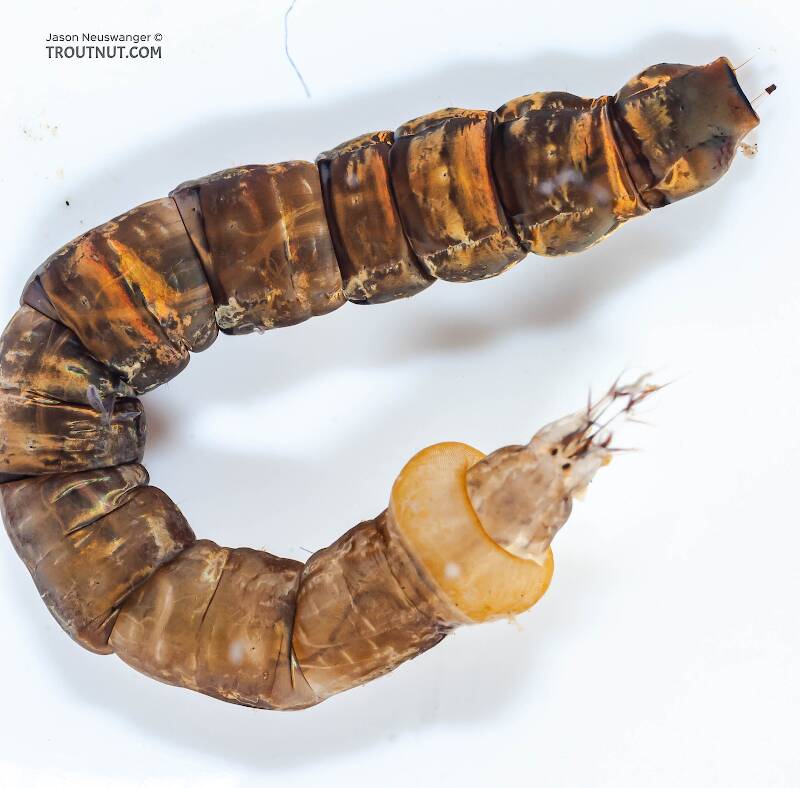
Hex Mayflies
Hexagenia limbata
The famous nocturnal Hex hatch of the Midwest (and a few other lucky locations) stirs to the surface mythically large brown trout that only touch streamers for the rest of the year.
Featured on the forum

Some characteristics from the microscope images for the tentative species id: The postero-lateral projections are found only on segment 9, not segment 8. Based on the key in Jacobus et al. (2014), it appears to key to Neoleptophlebia adoptiva or Neoleptophlebia heteronea, same as this specimen with pretty different abdominal markings. However, distinguishing between those calls for comparing the lengths of the second and third segment of the labial palp, and this one (like the other one) only seems to have two segments. So I'm stuck on them both. It's likely that the fact that they're immature nymphs stymies identification in some important way.

Troutnut is a project started in 2003 by salmonid ecologist Jason "Troutnut" Neuswanger to help anglers and
fly tyers unabashedly embrace the entomological side of the sport. Learn more about Troutnut or
support the project for an enhanced experience here.
Limoniid Crane Flies
This common name refers to only one family. Click its scientific name to learn more.
True Fly Family Limoniidae
These are pretty much always called Limoniid Crane Flies.
See Tipulidae for details about craneflies. This family is not known to differ from them in any ways important to anglers except appearance.

I'm not sure if this cranefly larva is in the genus Hexatoma or Limnophila, but the habitat suggests Hexatoma. Its coloring is iridescent, and I've never heard of that before. However, there is an insect virus genus Iridovirus which can infect craneflies and causes iridescence. It has not been reported in this region as far as I can tell, but perhaps it is the culprit. It makes for beautiful pictures.
See 4 more specimens...
References
- Jacobus, L. M., Wiersema, N.A., and Webb, J.M. 2014. Identification of Far Northern and Western North American Mayfly Larvae (Insecta: Ephemeroptera), North of Mexico; Version 2. Joint Aquatic Science meeting, Portland, OR. Unpublished workshop manual. 1-176.

